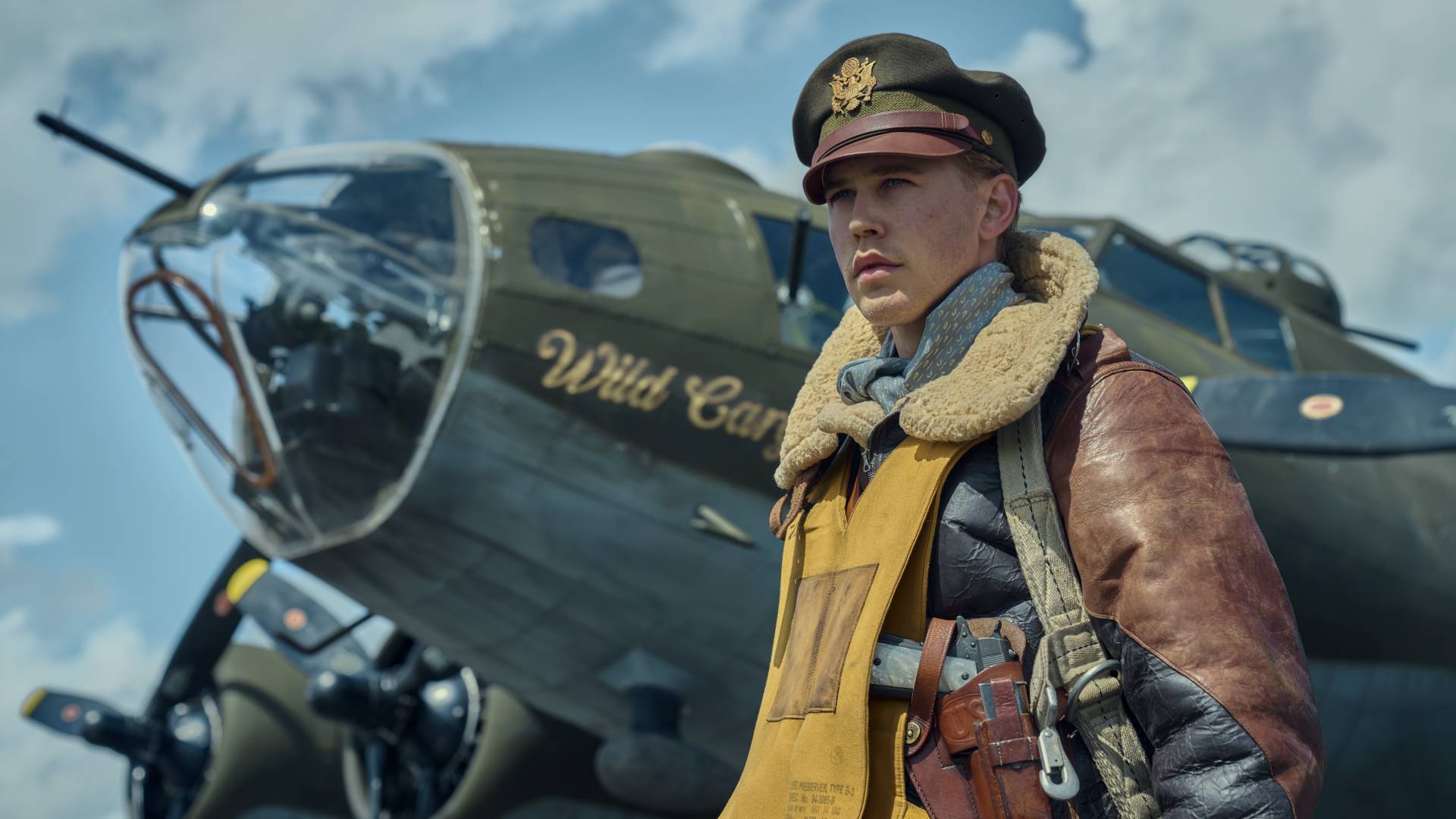
Focusing on the key campaigns of the US air force during WW2 was something exec producer Gary Goetzman and his partners, Tom Hanks and Steven Spielberg, "had always talked about" in the wake of their hit shows Band of Brothers (2001) and The Pacific (2010) – both multi-strand series that made stars of their casts and set high benchmarks for epic TV. Though we march chronologically further away from the events of WW2 with each passing year, the fascination with the era continues. And the overarching story at the heart of a wartime drama remains eternal.
"It’s a very simple concept," Goetzman tells Total Film at the end of a long production that began with filming in the UK in 2021. "We’ve got a dictator who wants to rule the world, and a whole bunch of people who want to protect democracy and make sure that he’s not successful. It’s the kind of story that we love anyway – and it’s true. So I think it always fascinates people when they know who they’re rooting for, and the goals are defined."
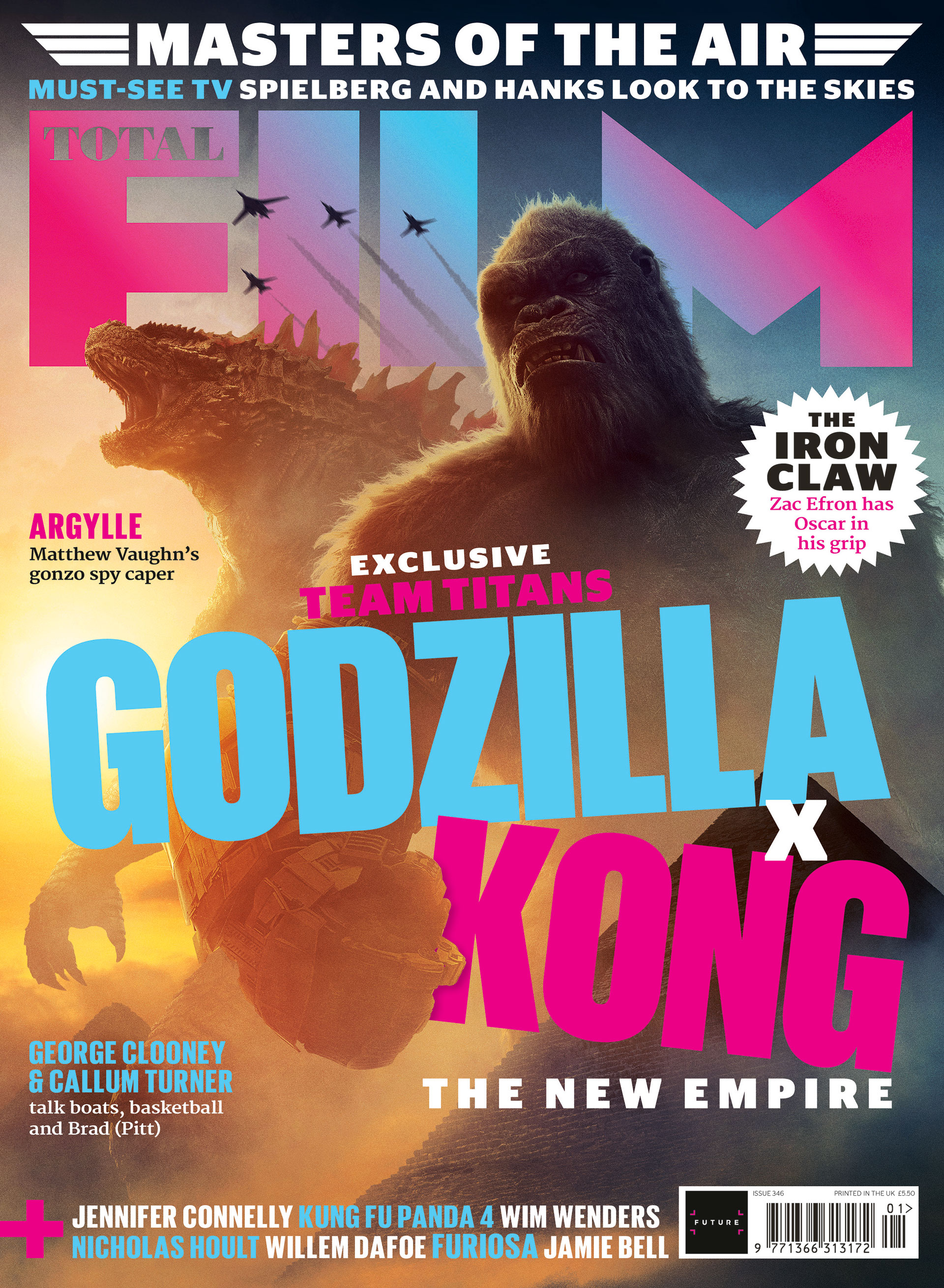
This feature is from the latest edition of Total Film magazine, which is available to buy right now here.
Based on Donald L. Miller’s bestseller, Masters of the Air: How the Bomber Boys Broke Down the Nazi War Machine, the limited series tracks the efforts of the Eighth Air Force stationed in Thorpe Abbotts, Norfolk in destroying key European Nazi targets. While the British air force saturation-bombed at night, the American strategy was to fly in daylight in order to target specifically – and the missions were therefore lethal. Flying in B-17 bombers known as "flying fortresses", the 100th squadron flew directly into flak, fought German aerial attacks, and if a warbird went down, the losses in personnel were catastrophic, with 10 men lost per plane. Lose three planes on a mission and 30 boys didn’t return to barracks.
Adapted by John Orloff, Masters of the Air follows a tapestry of tales across the campaign, taking in the camaraderie, bravery, fear, PTSD, adultery, capture and escape experienced by the men of the 100th. De facto leads are best-bud majors Cleven and Egan, yin and yang in character but devoted to one another. Gale ‘Buck’ Cleven (Austin Butler) is contemplative, reserved and a powerhouse leader who’ll do whatever it takes to get his boys home; John 'Bucky' Egan (Callum Turner) is a boisterous maverick, a man who sings and screws with the same passion that he flies and fights. Then there’s Harry 'Cros' Crosby (Anthony Boyle), a navigator who suffers from air sickness and war-inflicted disassociation from his marriage; Curtis Biddick (Barry Keoghan), a pugilist flyboy; Robert ‘Rosie’ Rosenthal (Nate Mann), a pilot battling PTSD; Robert Daniels (Ncuti Gatwa), a Tuskegee ace; and Ken Lemmons (Raff Law), an engineer on the ground who patches up the B-17s and counts the planes back into base. The show also covers the arcs of generals, babyfaced newbies, women and medics who thread through an intense period of time between 1943 and 1945.
I think it always fascinates people when they know who they're rooting for
Gary Goetzman
With Butler hot off an award-winning Elvis, Turner and Keoghan on fire and Gatwa currently playing TV’s most famous doctor, Goetzman chuckles at the hat trick of once again casting another company of bellwether stars "There’s over 300 speaking parts here. [Casting director] Lucy Bevan and her team just did a brilliant job. Who knew we were going to have Doctor Who? I called Tom [Hanks, who had worked with Butler on Elvis], and said, 'What do you think of this actor, Austin Butler?' He was like [mimics Hanks perfectly], 'Dude, I think he’s great.' We lucked out – it’s just a great bunch of guys. I couldn’t be prouder of them."
When Total Film catches up with Turner in early December 2023 as he promotes The Boys in the Boat, he recalls a similar journey to nabbing his role having auditioned for both Cleven and Egan while filming Fantastic Beasts 3. "Colleen Atwood, who was the costume designer on Fantastic Beasts, came in, and said, 'Gary likes your tape. They really like your tape.' I got very excited. Then after Christmas, I was told 'OK, you’re not Cleven, you’re Egan.' And I said, 'Look, I don’t care who I am. Just please let me be a part of this.'" Nate Mann was similarly determined to be in the show having grown up in a family who adored the first two series. "When I eventually got cast on this show my dad, who was just thrilled, had built a model B-17 as a congratulations to me," he laughs. "It was covered in glue and paint. It was not quite dry, but it was a beautiful gesture."
With an epic cast nailed, Spielberg, Hanks and Goetzman built huge sets in the UK and determined that before anyone climbed into a cockpit (more of which later) the diverse group of guys needed to learn to act like a unit. Spielberg brought in his long-time collaborator, military technical advisor and ex-marine trainer, Dale Dye. Bringing the cast together in 2021 before filming began, "the boys" – as Goetzman affectionately refers to them – were put through their paces with physical bootcamp and aviation training; "We wanted to try to give them some camaraderie, get into more of a military mindset."
Grunt work
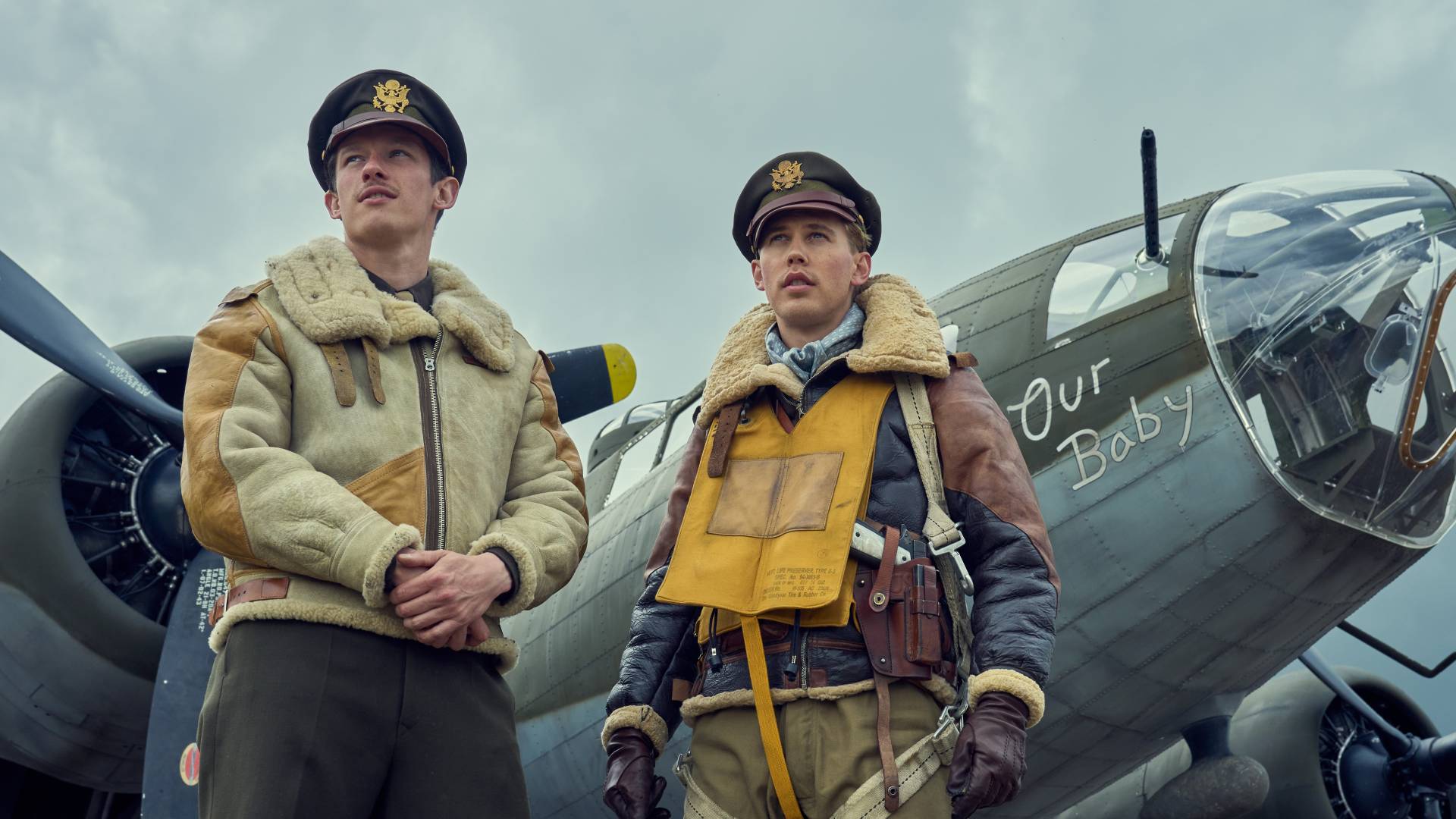
"It was [Dye’s] idea to put all the people who were playing majors, which was me, Callum, Nate, Austin, and a couple of the other lads, in a nicer hotel than the lads who were playing the cadets or whatever – to start that psychological bridge [to the characters and rank]," Anthony Boyle laughs when TF chats to him via Zoom, his accent back to his native Belfast after a year of Crosby’s American burr. "He calls you by your character name. I would put my hands in my pockets, and he would say, 'Crosby, get your dick skinners out of your pants!' And you go, 'Sir! Yes, sir!' If you give yourself to it, you get a lot out of it."
Mann recalls the constant marching Dye had the team do. "I remember going, at the beginning, 'Why are we marching? I don’t think we do any marching in the show. What’s this about?' After three days of it or so, we started to get a sense of real unison. We started to actually not just move as one, but we started to think as one." Turner and Butler leaned into their roles as leaders ("I’d follow those guys into battle no question, I would march behind them," Mann enthuses), and as the 10-men teams learned how to use their planes with aviation classes from military-history experts, real friendships grew that reflected those on the page. "It’s one of those cringe things to be like, 'We all became a family,'" Boyle shudders, "But coming to work with 250 lads, and everyone’s just fucking buzzing – it felt like a playground. Everyone felt it was such a privilege to be there. You know, sometimes you can be on set, and people are going, 'I’m here for the money. I’m here to take this job.' But because of the prestige of Band of Brothers; because the scripts were so good; because it’s fucking Steven Spielberg and Tom Hanks, everyone was so excited and wanting to give it their best."
"Your B-17 crew – they’re the men who you’re entrusting with your life, and therefore these are the men that you’re going to get the closest to," says Mann. "That ended up being very true in the show, because you’re spending all of your time in the cockpit – in my case, with the actor Josh Bolt, who I became very close with and we’re still really close to this day." For Turner and Butler, the brotherly love that weaves through the show wasn’t something the actors had to work at concocting. "We just hung out with each other all the time, as much as possible," Turner recalls of his still-strong friendship with the Dune: Part Two star. "And we were just unbelievably kind to one another from minute one. I guess we just teased each other and looked after each other simultaneously. It was beautiful working with him. He’s such an incredible actor, and I learned so much from working with him, and as a man. Some days, I would go just to entertain Austin. If I didn’t make him laugh, I wasn’t doing my job. He was such a safe place, and I hope he feels the same with me, because we just loved each other."
That pre-shoot training and bonding informed the drama when it came to calling action. "It’s interesting, because these boys would come [into the show], and when they 'died', they would go," Turner muses. "It was like it was real – we would miss their presence. They’d be replaced by someone else who was coming in for episode seven or whatever. Obviously, it could never match really losing someone, but there was the essence of that. It was a great process."
Screen test
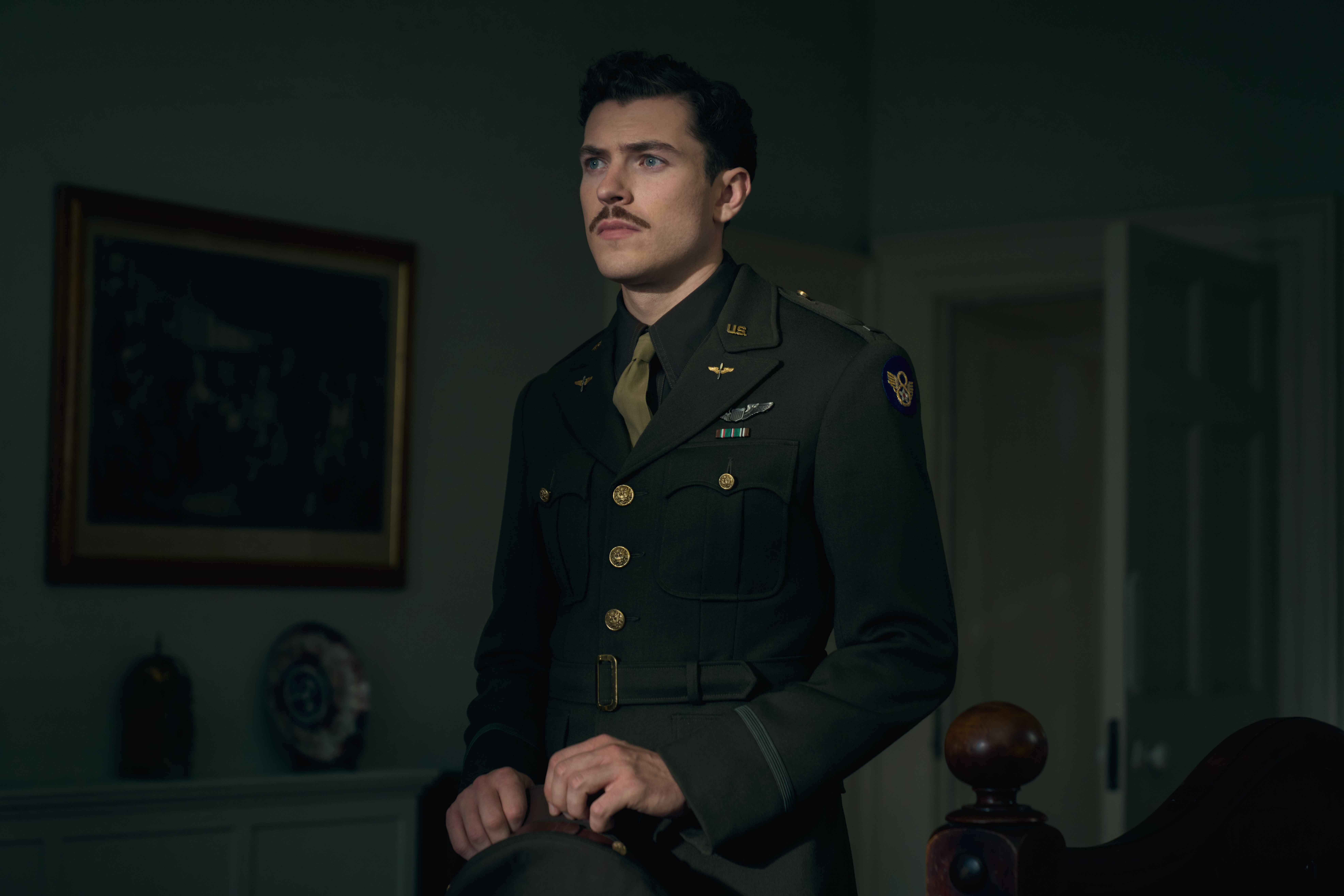
As the lads got into filming, Turner devised competitive games to pit crews against each other. "You had to get from laying on the ground, up into the hold [of the plane], and then into the pilot’s seat as quickly as possible," he laughs. "Not an easy thing to do. You have to do a reverse pull-up, and swing your legs up… you can see it in the show."
"It was ultimately just a fun way to practise trying to get in and out of this cockpit, which, for the purpose of this show, we had to make it look like we’d done it 100 times," nods Mann. No ordinary cockpits either. With real B-17s no longer suitable for flying and using for filming, Hanks, Spielberg and Goetzman decided to use CG technology to craft visuals to trick both cast and audience into believing they were in the midst of thundering flak, buzzed by gunfire of German pilots, trying to bring 10 men back from the prospect of death in a limping B-17 hulk, with glitchy engines, leaking fuel and freezing temperatures at 25,000ft.
"We built a couple of planes from scratch, a couple of extra cockpits, and the fuselage of the plane, and the tail gunner positions," Goetzman explains. "A lot of that, we could shoot on stage. Really, it’s primarily a CGI situation – so it’s just about those cockpits, and making those boys feel like they’re really in it. So it’s having screens around them, and having [CG] planes fly by them in real time. That process – it felt like they were in those planes. And everything in those planes was real, and everything that they were instructed to do; they had real pilots who’d flown B-17s, giving them their expertise on how to move even a knob."
"Gary and Apple really set us up to succeed," says Turner. "One of the most incredible things about that was that we had this technology called The Volume. It’s probably like 20 or 25 screens around a rig. So you’re immersed in the sky or the ground or wherever you are in the plane, and you’re sitting in your section of the plane. It had, at its most complete stage, two-thirds of a B-17. So you could manoeuvre it around, and the cameras would follow you. There were so many cameras. In the cockpit alone, there were probably 18 cameras that had all the different angles. And it was on a rig, a gimbal, and the rig felt like a theme park ride. So it would react as the plane would be reacting. It was such a beautiful place to play in. The planes flying over or coming towards you – it feels like it. And once we were in, we would stay in there. These guys would go on nine-hour missions, we’d be in there six hours. So you know, the sweat was real. It just adds to the feeling of being trapped in there."
With so many screens surrounding the gimbal rig, the heat was certainly on according to Boyle. "I’ve tried to cancel it from my brain! I’m getting fucking war flashbacks now," he chuckles. "It was so hot with the screens on this rig 60ft up in the air that they gave us these Formula One suits to cool us down. It was the middle of summer and you’ve got all the gear on, the sheepskin jacket. The Formula One jackets are essentially just wires or tubes, and then you’ve got a big gallon of freezing cold water. Whenever you were overheating, you’d stick it on and it’d blast around you. There was no acting required, because you were just actually trying to fucking survive. It was great."
Though the lads jest about PTSD, Masters of the Air explores the very real mental-health challenges of war alongside the der-doing. "Post-traumatic stress disorder as we understand it today is very different from how it was understood at the time," says Mann, whose arc includes Rosie coming to terms with the grief, sorrow, survivor guilt and trauma of dealing with daily death. "Our way of connecting to that, and really folding that into the show, was about how these men were able to really support one other. That’s what the show is about: we’re all fighting for one another."
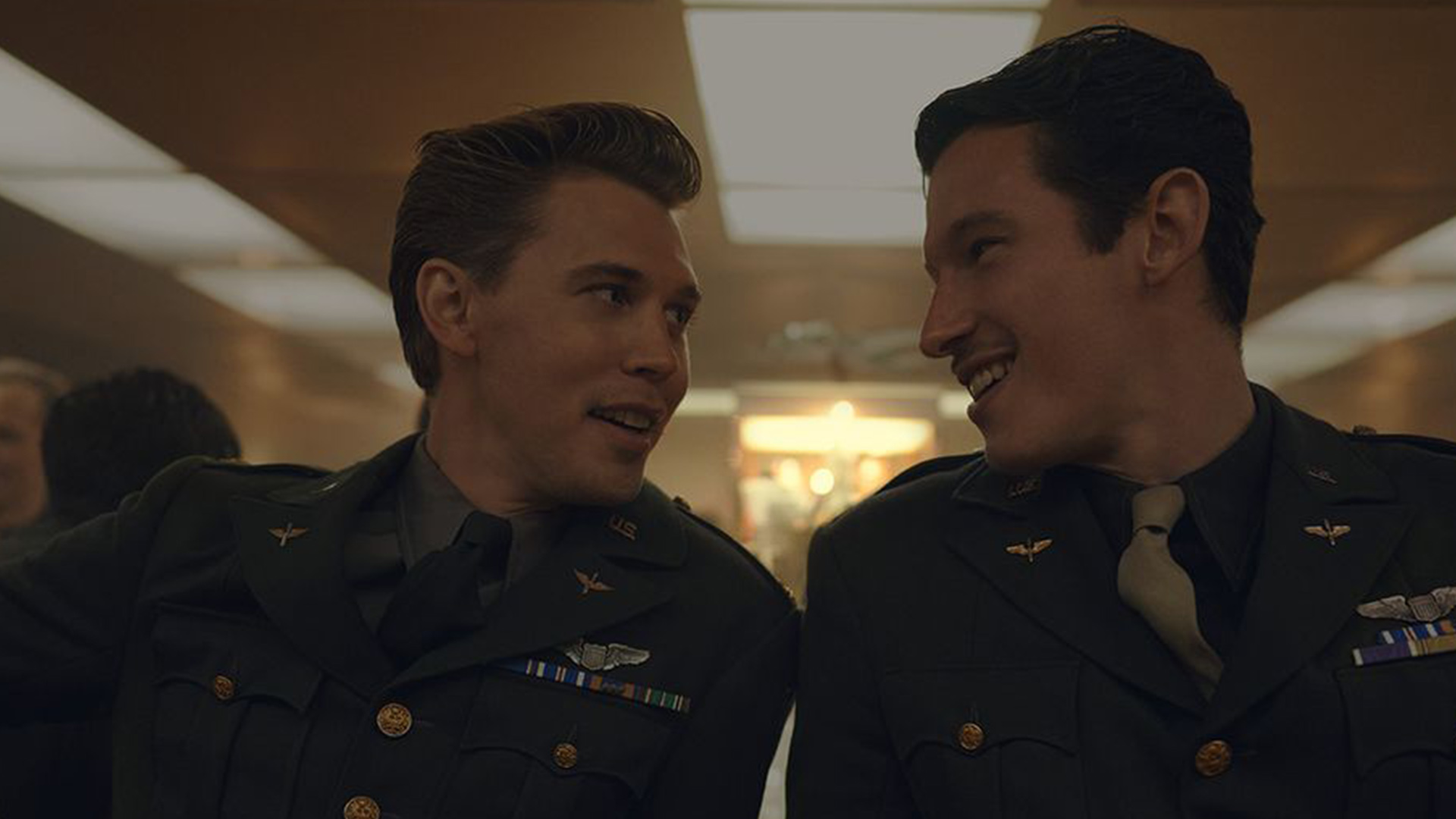
Fighting in the sky and in the pub – and internally. As the show progresses, the personalities of all the characters evolve and change, compressed and heightened by extraordinary circumstances. "They say that when you’re at war, your personality blows up times 10," muses Turner. "Egan’s natural starting point is to be fun, and to enjoy and live life to the full. So when he’s faced with death, it’s accentuated. For Cleven, he’s quieter and he would become more quiet, more reserved, go into himself. I can’t imagine what it was like for these men to do this. Everything about it is just the most traumatic thing you’ve heard."
For Goetzman, the show is another chance to explore the numerous tales of courage – to represent the key efforts of the Tuskegee airmen, show the guts of teenage boys climbing into gun turrets, explore the efforts of the French Resistance, the spy network and the support (emotional, sexual, logistical) of women in all walks of life on the ground.
And for Turner it’s a chance for 21st-century audiences to remember the sacrifices made by a generation. "I think it’s so important to remember and honour what these guys went through to provide the space that we live in. Most of the people that lived through World War Two, and managed to survive that, are no longer with us. It’s no longer within our living memory. I think it’s so important that we tell that story. I guess it’s not easily repeated, but we don’t want to repeat our mistakes as humans."
And, it’s also a blast hanging out with these guys over nine hours? "Yeah, the truth is I just kind of want to go out on a night out with Buck and Bucky, and have a good time with them." Buckle up, lads. Time to rack ’em up and knock ’em down…
Masters of the Air streams on Apple TV+ from January 26 (two-episode premiere followed by weekly episodes).
This feature first appeared in Total Film issue 346, which you can buy here and on newsstands now.
For more, check out our guide to the best Apple TV Plus shows available right now.







